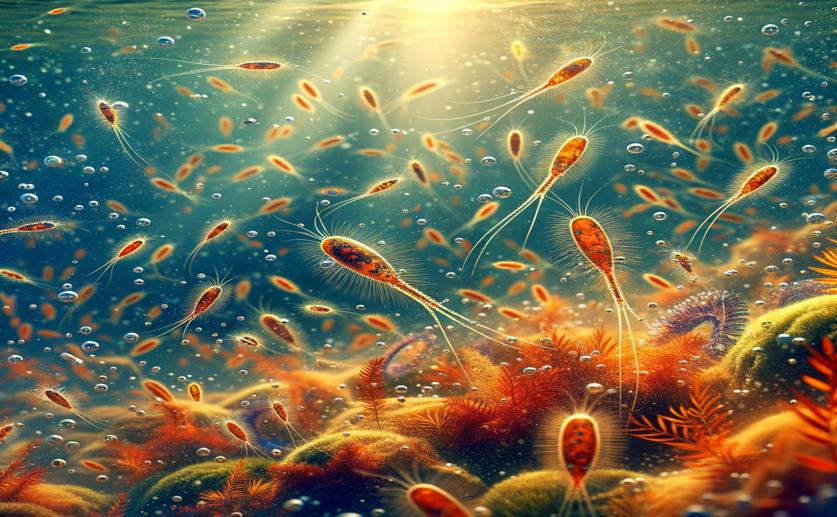
Exploring How Plankton Capture CO2 and Feed in Warm Coastal Waters
Jim Crocker
8th March, 2024

Image Source: Natural Science News, 2024
Key Findings
- Study in South China Sea finds plankton use diverse methods to turn CO2 into organic matter
- Different plankton types vary in their carbon-fixing ability, influenced by environmental factors
- Some plankton can consume other organisms, potentially boosting their carbon-fixing capacity
References
Main Study
1) In situ community transcriptomics illuminates CO2-fixation potentials and supporting roles of phagotrophy and proton pump in plankton in a subtropical marginal sea.
Published 5th March, 2024
https://doi.org/10.1128/spectrum.02177-23
Related Studies
2) Abiotic and Biotic Factors Affecting the Ingestion Rates of Mixotrophic Nanoflagellates (Haptophyta).
3) Transcriptome profiling reveals versatile dissolved organic nitrogen utilization, mixotrophy, and N conservation in the dinoflagellate Prorocentrum shikokuense under N deficiency.
4) Nitrogen and Iron Availability Drive Metabolic Remodeling and Natural Selection of Diverse Phytoplankton during Experimental Upwelling.
5) In Situ Molecular Ecological Analyses Illuminate Distinct Factors Regulating Formation and Demise of a Harmful Dinoflagellate Bloom.



 4th March, 2024 | Jim Crocker
4th March, 2024 | Jim Crocker